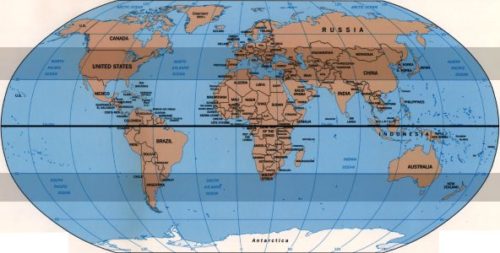 Lovers of wine and the wine vine can be found all over the world, in every known clime and on every inhabited continent. Meanwhile, the places where wine can actually be produced are confined to a relatively narrow strip of our dear old Earth, positioned between about 30 and 50 degrees north and south latitudes. From this narrow belt, subtract the thousands of square miles of ocean, of bogs too damp, deserts too dry, mountains too altitudinous (or just too rocky) for viticulture, and you’ll find your winey world greatly diminished. Eliminate the places where wine could be made, but never will be — either because the conditions aren’t conducive to quality or the effort required is frankly uneconomical — and you’re down to a very circumscribed area indeed.
Lovers of wine and the wine vine can be found all over the world, in every known clime and on every inhabited continent. Meanwhile, the places where wine can actually be produced are confined to a relatively narrow strip of our dear old Earth, positioned between about 30 and 50 degrees north and south latitudes. From this narrow belt, subtract the thousands of square miles of ocean, of bogs too damp, deserts too dry, mountains too altitudinous (or just too rocky) for viticulture, and you’ll find your winey world greatly diminished. Eliminate the places where wine could be made, but never will be — either because the conditions aren’t conducive to quality or the effort required is frankly uneconomical — and you’re down to a very circumscribed area indeed.
Go beyond even this by red-pencilling all the areas that have never been properly appellated — meaning, carved into segments each with its own set of legally enforceable rules governing production and style — and what you have left isn’t much compared with the band of territory we started with. But now we’re going to ask you to exclude from consideration all but those few places where wine has been a deeply embedded quotidian reality for centuries – long enough for it to have functioned as a fundamental shaper of individual habit, of collective mentality, of culture, of a way of life in the broadest sense. Once you’ve done this, you’ve worked your way down to a kind of essence: wine’s tiny but persistently beating heart, rhythmically thumping along for something like eight thousand years now, and showing no signs of sclerosis or cardiac weakness.
Here’s our rough list of the places that can be said to qualify as heartland: Georgia; Armenia; portions of pre-Islamic Persia (Iran), Anatolia (Turkey), Syria-Palestine and North Africa; much of the pre- or non-Ottoman-occupied Balkans; Hungary; the Black Sea border states (present-day Romania, Bulgaria, Moldova); Greece; Italy; France; Spain; Portugal: parts of Germany and Austria; bits of Switzerland. To certify for heartland status in our book, it’s not enough for there to be an elite, urban constituency for wine. We need to see an unbroken chain of consistent involvement from the level of peasant producer/consumer up to courtly clientele, and everything in-between. Admittedly, these stringent prerequisites eliminate the entirety of wine’s New World domains. Sorry, Australia, South Africa, USA — we’re sticking by them.
It’s not just that these civilizations were themselves soaked in wine. They have served ever since as models for those whose histories can’t boast a centuries-long romance with the vine, but have nonetheless longed to make a personal connection with its primordial magic and uniquely humanizing influence.
– Stephen Meuse
Taste, talk, and learn about wine this week in the FKC wine corner . . .
THURSDAY, JUNE 27 3-6 PM – QUOTIDIAN REALITY
2017 Marina Danieli, Friuli-Venezia Giulia Pinot Grigio Ramato $19.95
2018 Mas de Cynanque, Saint Chinian “Rosé de Cynanque” $16.95
2018 Ampeleia IGT Costa Toscano “Unlitro” $18.95
FRIDAY, JUNE 28 3-6 PM – PRIMORDIAL MAGIC
2016 Punta Crena, Riviera Ligure di Ponente Vermentino, $23.95
2017 Ca La Bionda Valpolicella, $18.95
2016 Óscar Olmos, Jumilla “La Princesa,” $19.95